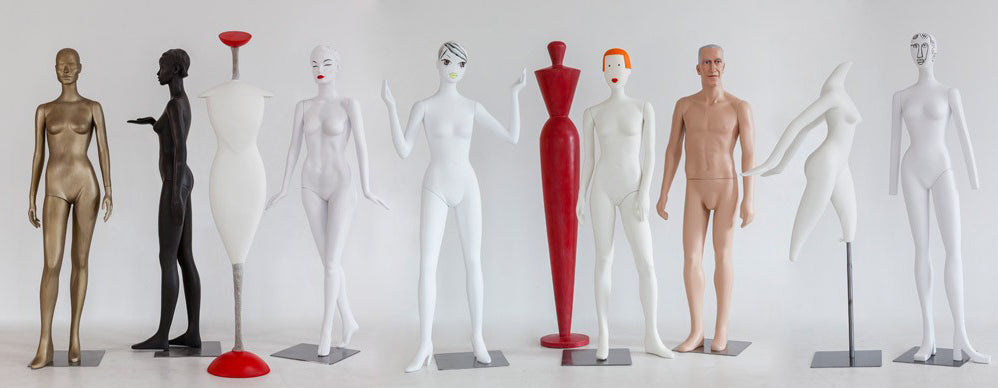In the world of fashion design, one of the longest standing, and most trusted tools is the mannequin. As the consumer, we know this three-dimensional representation of the human form from every store window display. As a designer, it is the torso that brings drawings to life; it is the tool used to create and drape the new. It displays the reality of an idea or dream.

The mannequin - whether realistic, semi-realistic, or abstract - works displaying apparel as a stylized fantasy. The mannequin may vary in size, proportion, age, or action/pose; however, whatever its final shape, it is a form of sculpture and a piece of art. Mannequins have evolved as much as the clothing they are made to show off. Their designs have incorporated trends, artistic influence, and cultural changes over time. With World War I, mannequins first revealed the unheard of leg and even knee when showcasing apparel for the women’s new working role. In the 1960s the success of the Twiggy mannequin, with its large eyes, long lashes and near-anorexic body, helped make the real Twiggy one of the most famous models in history. Whatever the current culture, “[mannequins] convey idealized images of ourselves, what we aspire to rather than what we actually are” says Robert Hoskins, Assistant Professor at Manhattan’s Fashion Institute of Technology (FIT).

Designer Ralph Pucci is often known better today for his collections of furniture, lighting, floor coverings, sculpture, fine art and graphic art. However, his start began as a young man helping in the multi-generation family mannequin business. Rather than seeing mannequins as glorified coat hangers, in the 1970s, Ralph Pucci broke into notion of the mannequin as a “super model” and able to display action — emerged the living mannequin with a personality. He then began to look toward other arts for inspiration, from rock ’n’ roll to modern art. In the 1980s, Mr. Pucci pursued the idea of giving up-and-coming fashion designers total freedom to create whatever mannequin they wanted. His changes of thought have brought record sales for the company and have altered through the years how culture has viewed the art form.

Pucci through his career has transformed the mannequin from a dull tool of display into an item that embodies beauty, personality and art. He personified the previously anonymous form in new and challenging ways, creating visions of physical beauty that were more specific, empowered, and diverse than the fashion industry had previously allowed. His handcrafted “models” took their inspiration from supermodels, Greek and Roman sculptures, and the glam rockers, The New York Dolls. Today, Ralph Pucci is considered the best of the best in the

The Museum of Art and Design exhibition, The Art of the Mannequin, includes over 30 of Pucci’s most important mannequins (sans the original garments), as well as an in-gallery recreation of his sculpture studio. Pucci’s master sculptor and longtime collaborator, Michael Evert, will give visitors a first-hand look at the creative process, from initial modeling in clay to the rendering of the fiberglass end-product. This exhibition aims to bring new light to the ‘showroom dummies’ and offer an understanding to this designed object. The exhibit runs from March 1 - October 25, 2015 in New York City.
